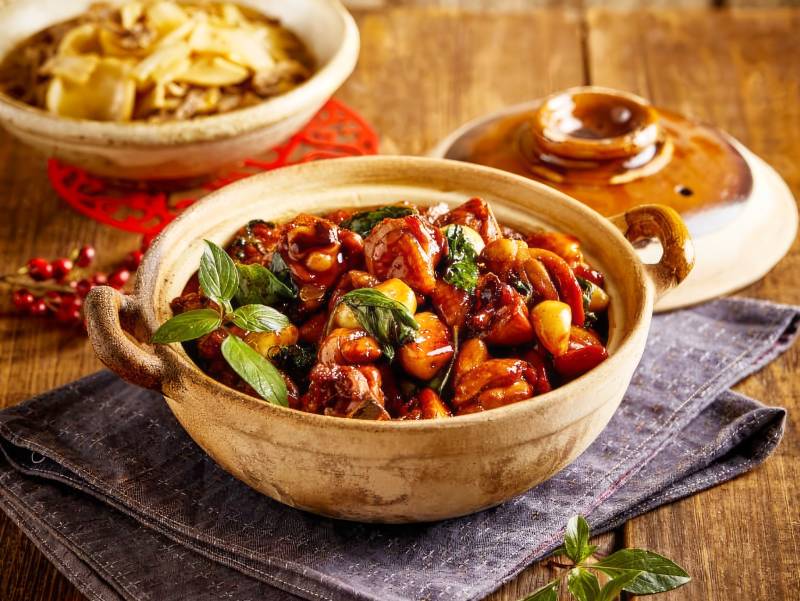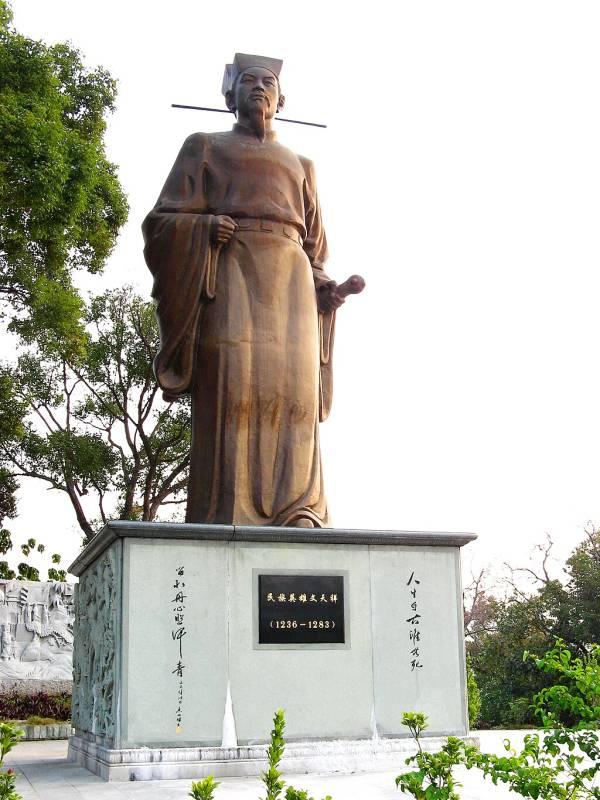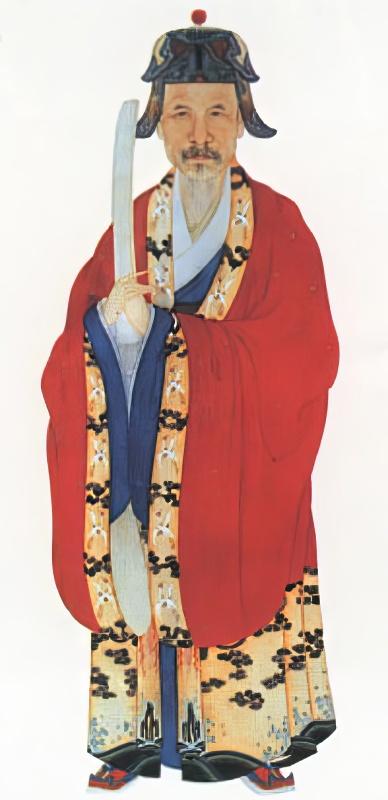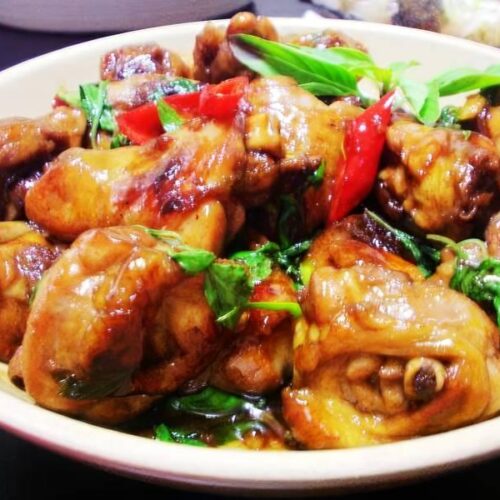Three-cup chicken is a famous traditional dish in Jiangxi Province with a history dating back to the Song Dynasty . In 2008, Three Cups Chicken was chosen as the main menu of the Olympic Games. In 2021, Three Cups Chicken ranked first among the top ten dishes in the “Top Ten Jiangxi Cuisine Foods” competition announced by the Jiangxi Provincial Ministry of Commerce to promote the development of Jiangxi cuisine .
The origin of the three mug chicken dish
Later, Three Cup Chicken spread from Jiangxi Province to Taiwan to become one of the most typical Taiwanese specialties. Originally, chicken was cooked with one cup of rice wine , lard, and soy sauce. The Taiwanese made small changes, replacing fatty lard with sesame oil and adding a unique spice – Thai basil. Thai basil (known as 九层塔 in Chinese) adds another layer of flavor. Although some other versions of the dish do not include this herb, it is a key element in the Taiwanese version. (If you have trouble getting Thai basil leaves, substitute Italian basil, which has a milder flavor).

A tale of three mugs
The story of the origin of this dish is also interesting. Wen Tianxiang (文天祥) , Duke of Xin (信國公) was a Chinese poet and politician. He was captured, tortured, and about to be executed for his opposition to Kublai Khan’s invasion of China. When an old woman from Jiangxi heard about this, she decided to prepare Wen Tianxiang ‘s last meal before his execution. The old woman brought a basket of chicken and a jug of wine to the prison where they imprisoned Wen Tianxiang. Together with the jailer, they cut the chicken into pieces, found a clay bowl, put the chopped chicken pieces in the clay bowl, poured three cups of rice wine, added a little salt and other spices. After about an hour of cooking, the chicken was crispy and fragrant. Wen Tianxiang , full of grief, ate the last meal before the execution and likened the “three cups” of rice wine to the “three pains”.


Later, the jailer returned to his hometown of Ningdu , Jiangxi Province , to cook this dish in his memory every year on the ninth day of the twelfth lunar month, the anniversary of Wen Tianxiang’s death. In China, Wen Tianxiang has become a popular symbol of patriotism, justice and resistance to tyranny.
Preparation
The traditional version of three-cup chicken calls for boneless, skin-on, large chunks of whole chicken for optimal flavor. You can use boneless chicken thighs with the skin on. They are delicious and have an authentic taste. Other options include chicken wings, drumsticks and skinless thighs. Chicken breasts are not ideal.

Kuře tří hrnků (San Bei Ji 三杯鸡)
Ingredients
- 3 lžíce sezamového oleje
- 1 ks zázvoru (velký asi jako palec) nakrájený na plátky
- 15 stroužků česneku
- 3 ks jarní cibulky oddělené bílé a zelené části
- 900 g kuřecích stehen nakrájených na kousky o velikosti sousta
- ½ šálku rýžového vína Shaoxing
- 4 lžíce sójové omáčky
- 1 lžíce cukru
- 1-2 ks chilli – nakrájené na hrubé kousky nebo paprika
- 1 hrst čerstvé thajské bazalky
Instructions
- Nalijte 3 polévkové lžíce sezamového oleje do pánve, poté přidejte plátky zázvoru, česnek (celý nebo rozpůlený) a bílou část jarní cibulky. Smažte na mírném ohni, dokud se ingredience nerozvoní a česnek lehce zhnědne (asi 1 minutu)
- Přidejte kuřecí kousky na pánev v jedné vrstvě a opékejte, v případě potřeby naklánějte pánev, aby byly všechny kousky ponořeny do oleje, po dobu 1 minuty. Kuřecí kousky otočte a vařte o 1 minutu déle.
- Přidejte rýžové víno Shaoxing, sójovou omáčku, cukr. Krátce promíchejte a poté přikryjte pokličkou. Nechte asi 5 minut podusit na vysokém ohni.
- Zredukujte omáčku. Otevřete víko a vmíchejte papriku a zelenou část jarní cibulky. Nechte dále vařit odkryté (udržujte vysokou teplotu).
- Jakmile se omáčka zredukuje na požadované množství, vypněte ohřev. Vmíchejte ½ lžíce sezamového oleje a lístky čerstvé bazalky. Vyndejte a podávejte teplé s dušenou rýží.






